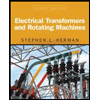
Concept explainers
True or False? A faulty voltage regulator can only cause a no-charge condition.
The statement “A faulty voltage regulator can only cause a no-charge condition” is true or false.
Answer to Problem 1RQ
The given statement “A faulty voltage regulator can only cause a no-charge condition” is false.
Explanation of Solution
Voltage regulators are used to control and maintain the voltage at a constant level. It regulates the charging voltage of alternator.
In case of faulty voltage regulator, battery electrolyte is depleted quickly. This happens when battery is constantly over-charged. This condition is also known as over-charging condition.
Another symptom of faulty voltage regulator is dead battery. Due to this, battery loses the ability to charge or stop altogether. This condition is a no-charging condition.
Hence, a faulty voltage regulator can cause both no-charge condition and over-charging condition.
Conclusion:
Thus, the given statement “A faulty voltage regulator can only cause a no-charge condition” is false.
Want to see more full solutions like this?
Chapter 19 Solutions
Automotive Technology: A Systems Approach (MindTap Course List)
- True or False: Pressures below atmospheric pressure cannot be detected.arrow_forwardTrue or False: When troubleshooting a small system, the first step is to attach the high- and low-pressure gauges.arrow_forwardTrue or False? A zero reading on an ohmmeter means the circuit or component is open.arrow_forward
- True or False? A generator that is not producing voltage or current may have an open stator winding.arrow_forwardWhich of the following uses a permanent magnet and two electromagnets? Air-core gauge Balancing coil gauge Quartz analog gauge D' Arsonval gaugearrow_forwardWhat voltages indicate good oil in the standard dielectric test of oil?arrow_forward
 Automotive Technology: A Systems Approach (MindTa...Mechanical EngineeringISBN:9781133612315Author:Jack Erjavec, Rob ThompsonPublisher:Cengage Learning
Automotive Technology: A Systems Approach (MindTa...Mechanical EngineeringISBN:9781133612315Author:Jack Erjavec, Rob ThompsonPublisher:Cengage Learning Refrigeration and Air Conditioning Technology (Mi...Mechanical EngineeringISBN:9781305578296Author:John Tomczyk, Eugene Silberstein, Bill Whitman, Bill JohnsonPublisher:Cengage Learning
Refrigeration and Air Conditioning Technology (Mi...Mechanical EngineeringISBN:9781305578296Author:John Tomczyk, Eugene Silberstein, Bill Whitman, Bill JohnsonPublisher:Cengage Learning Automotive TechnologyMechanical EngineeringISBN:9781337794213Author:ERJAVEC, Jack.Publisher:Cengage,
Automotive TechnologyMechanical EngineeringISBN:9781337794213Author:ERJAVEC, Jack.Publisher:Cengage, Electrical Transformers and Rotating MachinesMechanical EngineeringISBN:9781305494817Author:Stephen L. HermanPublisher:Cengage Learning
Electrical Transformers and Rotating MachinesMechanical EngineeringISBN:9781305494817Author:Stephen L. HermanPublisher:Cengage Learning



